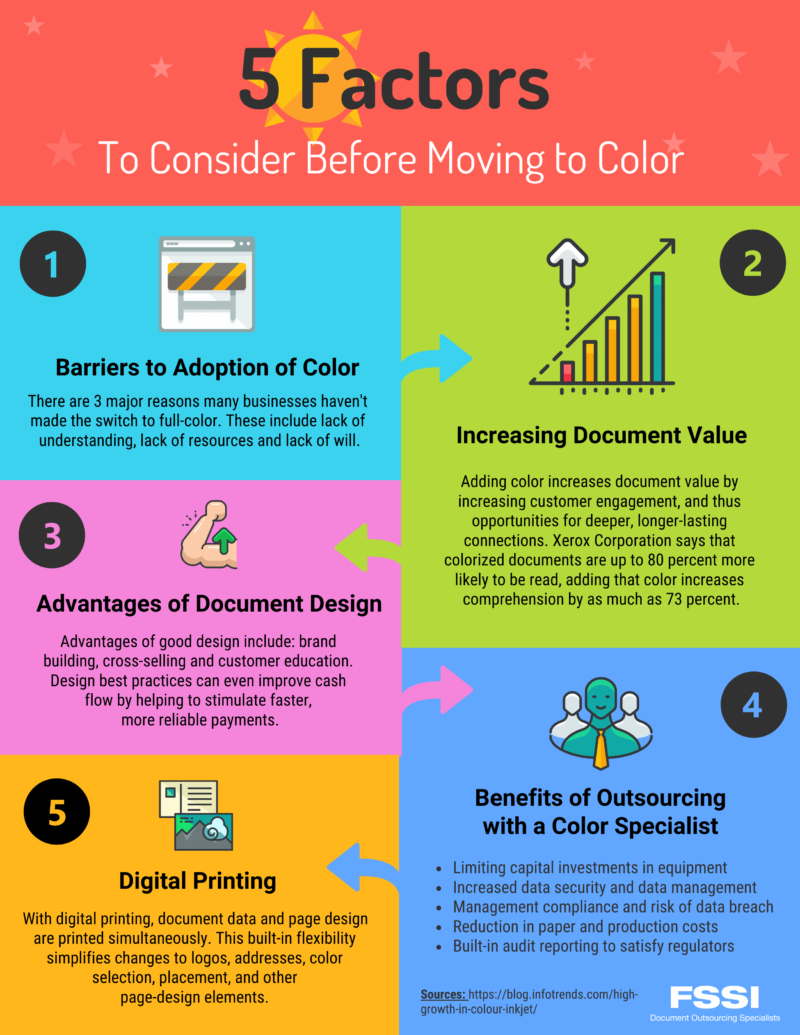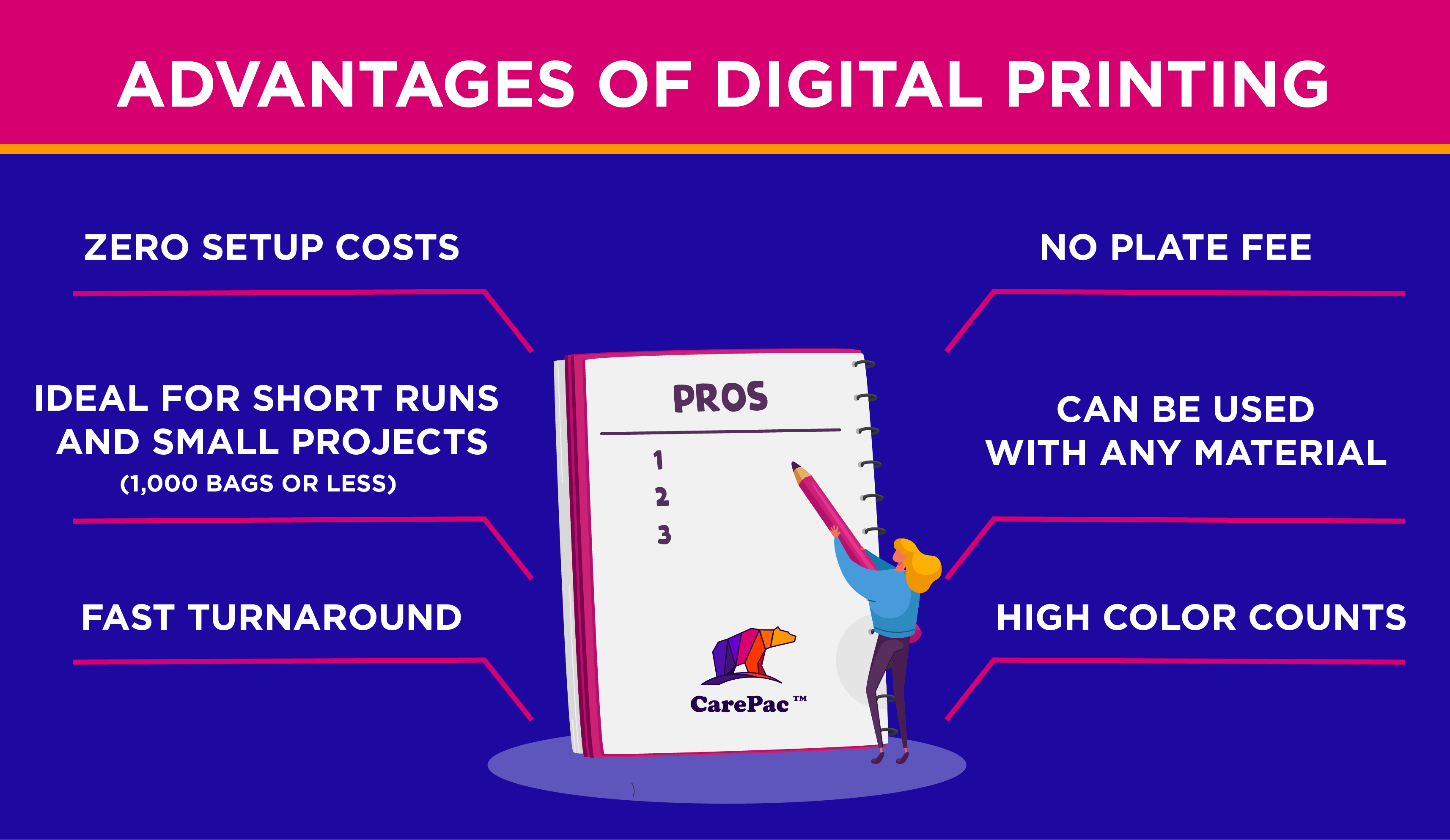The Basic Principles Of Digital Printing
The Basic Principles Of Digital Printing
Blog Article
Digital Printing Can Be Fun For Everyone
Table of Contents8 Easy Facts About Digital Printing DescribedThe Facts About Digital Printing UncoveredThe Definitive Guide for Digital PrintingDigital Printing - TruthsHow Digital Printing can Save You Time, Stress, and Money.The Single Strategy To Use For Digital Printing
Variable data printing, such as direct mail with individualized codes and addresses, is preferably matched for electronic printing. Digital fast printing only needs four steps of style, review, printing and binding to obtain whatever done. Digital quick printing has an unmatched advantage: print on demand.According to PMMI, electronic printing allows brands and manufacturers to respond rapidly to consumer needs while boosting the supply chain, minimizing warehousing expense and waste, and taking pleasure in faster time to market. That all noises terrific, but exactly how does this technology do all that? The significant differentiator of these modern technologies is that there are no set up fees and no plates with electronic printing.
Digital Printing Fundamentals Explained
According to Wikipedia, the best difference in between electronic printing and traditional techniques such as lithography, flexography, gravure, or letterpress - Digital Printing is that there is no need to replace printing plates in electronic printing, whereas in these analog printing methods the plates are continuously replaced. This results in quicker turnaround time and reduces price when making use of digital printing.
Rapid production means getting your product to market quicker. It also implies it's much easier and faster to make changes later, when you transform a recipe, include a SKU, or create seasonal packaging. Digital printing is extremely flexible, so it's easy to make adjustments to the package style rapidly. Everything goes back to the plates.
With traditional printing methods, short-run printing is simply not possible. Because a terrific design can make or damage your item, electronic printing consistently develops high-grade, clear and vibrant graphics each time.
Digital printing is the process of printing digital-based images straight onto a selection of media substrates. There is no need for a printing plate, unlike with offset printing. Digital files such as PDFs or desktop computer publishing files can be sent out directly to the digital printing machine to print theoretically, photo paper, canvas, material, synthetics, cardstock and other substratums.
The 15-Second Trick For Digital Printing
According to PMMI, digital printing allows brands and producers to react rapidly to customer demands while boosting the supply chain, minimizing warehousing expense and waste, and appreciating faster time to market. That all audios great, but how does this innovation do all that? The major differentiator of these technologies is that there are no set up costs and no plates with digital printing.
According to Wikipedia, the best difference in between electronic printing and traditional methods such as lithography, flexography, gravure, or letterpress is that there is no requirement to change printing plates in electronic printing, whereas in these analog printing methods the plates are repetitively replaced. This leads to quicker turn-around time and decreases expense when utilizing electronic printing.

An Unbiased View of Digital Printing
Extra supply can suggest more waste in the future. With traditional printing techniques, short-run printing is simply not possible. Because an excellent layout can make or break your product, electronic printing constantly develops high-quality, clear and vibrant graphics each time. Digital printing on versatile pouches adds the bright, dynamic, and exact graphics that almost bid consumers to connect and touch them.

According to PMMI, digital printing allows brand names and producers to respond quickly to client needs while improving the supply chain, decreasing warehousing expense and waste, and appreciating faster time to market. That all sounds great, yet just like this how does this technology do all that? The significant differentiator of these innovations is that there are no set-up costs and no plates with digital printing.
Everything about Digital Printing
According to Wikipedia, the best distinction in between digital printing and traditional approaches such as lithography, flexography, gravure, or letterpress is that there is no need to change printing plates in electronic printing, whereas in these analog printing techniques the plates are repeatedly replaced. This leads to quicker turn-around time and lowers price when making use of digital printing.
Digital printing is extremely flexible, so it's simple to make changes to the plan layout promptly. It all goes back to the plates.

What Does Digital Printing Do?
Digital printing is the process of printing digital-based images directly onto a range of media substrates. There is no need for a printing plate, unlike with balanced out printing. Digital files such as PDFs or desktop computer publishing files can be sent straight to over here the digital printing machine to publish theoretically, image paper, canvas, textile, synthetics, cardstock and various other substratums.
Report this page